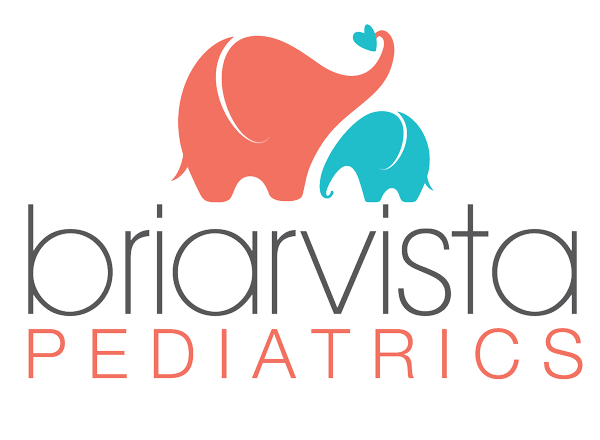Curbside Flu Shots!
/in Blog /by Dr. WexlerCan I send my kid back to daycare/camp/school yet? (Please!)
/in Blog /by Dr. WexlerI have been getting a LOT of questions over the past few weeks about sending kids back to daycare, school, or camp.
Let me start off by saying that there is NO right answer. And what works for one family may not work for another family.
The past few months have been hard. It’s been hard on kids to not be at school, and it’s been hard for parents for the kids to not be at school.
Lots of kids have had regressions — whether it’s been more potty accidents, more nightmares, or more tantrums.
Parents can’t work with their kids at home either.
Kids need the socialization that happens at school or daycare. They need more physical activity and more brain activity than most parents can provide at home, especially if also trying to work from home. While we have all managed to *survive* the past few months, we know that kids (and parents) will *thrive* once schools are re-opened.

Unfortunately, there is still a lot we do NOT know.
But as evidence emerges around the world, this is what we pretty confidently believe:
— The vast majority of children who contract Covid19 are either completely asymptomatic or only mildly ill. A very small % require hospitalization and a tiny % have poor outcomes.
— Daycares have been open worldwide the entire time (mainly for kids of essential workers), and there have not been major outbreaks.
— Young kids (pre-puberty) do not seem to transmit the virus very well. This means hardly any kid-to-kid or kid-to-adult transmission.
— The greater risk is to the adults involved: parents, teachers, other caregivers.
As schools reopen, most of them are focusing on addressing the last issue. Limit the opportunity for adults to interact with one another, and you limit the spread of virus between adults.
They are also focusing on overall sanitation concerns: wiping down toys/surfaces frequently, washing hands (correctly) on a regular basis, limiting the use of shared spaces (such as cafeterias).
Many are also implementing rules regarding face coverings (which should NEVER be used in kids <2yo) and daily temperature screenings for kids and adults.
The real problem, at this point in time, is that we — pediatricians and parents — do not have guidelines for returning to school if a kid is sick. We need to be prepared for a school policy that requires 3, 7, 10, or even 14 days home at a time. Even if there is another source for fever, such as strep throat or an ear infection, schools may institute stricter rules than before. And while I can make a recommendation based on best evidence, there are not yet any national guidelines to follow.
However it does look like at some point soon, we WILL be able to run a COVID19 test here in the office, with results in 15-20 minutes. Like a flu test, this becomes helpful for knowing what to expect and when someone can return to school or work — but does not pick up 100% of cases. So all testing will have to be done under consultation for how to interpret the results. But having this ability should help a lot.
Taken all together, what does this mean? Sending your kid to daycare or school is most likely safe. It is most likely necessary. And it is most likely something that you will be doing in the next few months. Continue practicing social distancing whenever/wherever you can. Wear a mask. Wash your hands. And call us with any concerns.
It’s HEEEERE…..are you ready?
/in Blog /by Dr. Wexler
Guess what arrived today? THE POLLEN!
Are you ready for pollen season in the South? Here come the itchy and watery eyes, sneezing and runny noses, and dry coughs.
As much as we love how beautiful spring is here, it can be hard to deal with all the pollen. And I’m not just talking about keeping your car cleaned.
Here are a few tips to help you manage your child’s symptoms.
Flu shots! Get your flu shots here!!
/in Blog /by Dr. WexlerYay, flu shots have arrived! Call today to schedule your child’s nurse visit, or check our Facebook page for walk-in hours.
Why get a flu shot?
Simply put, flu shots save lives. A study by the American Academy of Pediatrics found that receiving a flu shot reduced the risk of dying from influenza by 65% in healthy children. Getting a flu shot reduces the risk of a PICU admission for flu-related illnesses by 75%. In the 2017-2018 flu season alone, nearly 200 children died from influenza in the United States. 80% had NOT been vaccinated.
In a good year, it will reduce your child’s risk of catching the flu by 40-80%. And even in a bad year, children & adults who received a flu shot and still catch the flu have a much shorter duration of illness. Two or three days of illness sounds a lot better than 7-10 days!
And let’s not forget, getting flu shots protects the people around us. Infants cannot receive a flu shot until they are 6 months old. Some children and adults have a medical reason to not get the flu shot, or are immunocompromised and at high risk for complications from the flu.
Who should get one?
Everybody over the age of 6 months.
The only contraindication is in someone who has a history of allergic reaction to a previous flu vaccine.
When should you get one?
Today! There is no evidence that it’s better to wait until later in the flu season to get your flu shot. Cases are already being reported sporadically, and in a typical season the numbers will start climbing by Thanksgiving. The vaccine takes 2-3 weeks to be fully effective. Typical “flu shot season” begins October 1st and runs through March.
For any child younger than 8 years who has never had a flu shot before or has only had 1 dose ever before, two doses of the flu vaccine are required (1 month apart). Full immunity effect will not be present until 2-3 weeks after the 2nd dose.
Which flu shot should you get?
This year we are only stocking the injectable version of the flu vaccine, based on different recommendations between the CDC and the AAP regarding the use of the FluMist. If there is evidence that the FluMist is just as effective as the shot this year, we will stock it for next season. But in previous years, it was far less effective, and that is not a risk we are willing to take.
However, feel free to ask for the shot blocker! And a sticker for afterwards.
But Doc, won’t the flu shot give me the flu?
Nope. Cannot happen. That’s like making an omelette from egg shells. You may be achy or have low-grade fever after a shot — but that is just a sign of your robust immune system responding to the introduction of foreign material. You may coincidentally come down with a cold, which is more likely to happen if you wait until winter for your flu shot when most people have 1-3 colds per month. But you will NOT catch influenza from the vaccine.
Any other questions about the flu shot? We hope to see you in the office soon to get yours!
‘Tis the Season…..for Coughs and Colds
/in Blog /by Dr. WexlerIt’s the middle of December. Your child has seemingly had a runny nose for weeks already. How do you know when to call the doctor? What can you do at home?
Winter is known as “cold & flu season” for a reason. Many illnesses DO have a seasonal aspect — influenza being the most common seasonal illness. Also as it gets colder outside, we spend more time indoors. And it is much easier to spread germs indoors, so we tend to catch more bugs this time of year.
The average child has 10-12 viruses per year. Group them heavier in the winter months, and yes, it will seem like your child has a runny nose non-stop for months. Typically, however, these are back-to-back viruses and not one long illness.
You know that viruses do not improve with antibiotics. But maybe it’s something worse. Or maybe a mild virus has progressed to a major illness. So when should you call the doctor?
- An infant younger than 60 days old with temperature of 100.4F or higher (measured rectally) should be seen, regardless of other symptoms.
- Any child with difficulty breathing — such as rapid breathing, wheezing, barking cough or a harsh noise when breathing in (stridor), using extra muscles to breathe, or if he cannot finish a sentence without taking a breath — should be seen right away.
- A child younger than 2 years of age who has ear pain bad enough to wake them at nighttime, or fever that persists beyond 48hrs in the setting of congestion/runny nose, should be checked for an ear infection.
- A child older than 2 years with ear pain and/or fever (over 101F) for more than 48hrs should be checked out as well.
- A child older than 2 years with a sore throat and NO other cold symptoms (runny nose/cough) should be checked for strep throat.
- If your child’s symptoms seemed to improve and then suddenly get worse again, they should be seen to rule out a secondary bacterial infection.
- A child who cannot drink enough fluids to have some urine output every 6 hours, minimum, needs to be seen.
Those guidelines are fine & dandy, but what about influenza itself? The one and only treatment option for the flu only works if started within 48hrs of onset of symptoms — the sooner the better. The medication is not without side effects though, so is often reserved for the sickest patients — those with underlying conditions such as asthma or heart disease, for example. If you suspect your child has influenza — especially after a known exposure and/or if they have underlying conditions — the sooner you bring them in to be tested the better. Not sure how to tell if it’s flu or just another virus? If the symptoms came out of nowhere it’s a pretty good indication of influenza. Was your child happily playing and eating in the morning, then suddenly has a fever and body aches after lunch? Potentially flu. Is your child too sick to play his favorite game or read her favorite book? Potentially flu. I sometimes say I can diagnose influenza by a “positive horizontal sign,” meaning this is the child who is laying down on the table with their coat over them when I walk into the room, NOT the kid sitting up and playing with toys. If you suspect flu, come in as soon as you can so we can check for it and potentially treat it.
If your child does NOT meet any of the guidelines above and you want to try to manage the symptoms at home, focus first on hydration. The better hydrated someone is, the better they will feel. For children over 1 year, you can use honey as a cough suppressant. A cool-mist humidifier often helps keep the airways open and moist. Some aromatherapy may or may not help, such as Vick’s VapoRub or Pads, but be sure to use only “Baby Rub”on the younger kids and never apply anything directly to the skin. What about cold & cough medicines? There are entire pharmacy aisles devoted to them. But they simply do not work. And may have side effects. Never use them on children younger than 6 years old, and use discretion with older kids — again, they are unlikely to help and more likely to hurt.
Of course, if your home remedies are not working or you have any concerns about your child’s health, do not hesitate to call our office. We will be happy to schedule an appointment any time — remember same day appointments are guaranteed if you call by 12pm.
Looking for ways to AVOID getting sick altogether?
#1: Get a flu shot (it’s not too late!). Even on years when the efficacy is not great at preventing you from catching influenza, it will still shorten the duration of the illness better than any medication.
#2: Wash hands! Wash before eating anything, after coming into contact with bodily fluids (including after sneezing, coughing, or using the bathroom), or any other time you think you should.
#3: Maintain a healthy diet. Your immune system can not function to its full potential if you are not feeding it a diet rich in vitamins & minerals.
Top 10 Rules of Car Seat Safety
/in Blog /by Dr. WexlerThe most dangerous thing you do with your child on a regular basis is get into the car. The most common cause of death in children under the age of 15 is unintentional injury, and the most common cause of unintentional injury is car accidents. Between 2010 and 2014, 2,885 children died in motor vehicle accidents nationwide — an average of 11 children a week. The Atlanta area, in particular, is known for its terrible traffic and thus high rate of car accidents: An average of five people a day or 31 people a week die in Georgia accidents. In Georgia, there were 1.53 deaths per 100 million vehicle miles traveled. The U.S rate was 1.42 deaths per 100 million vehicle miles.
As patients of Briarvista Pediatrics already know, I am car-seat safety advocate. That means that I am committed to keeping your children safe by reviewing the standards of car safety at each and every well-child visit. I will be posting a series of articles regarding safety at each stage of infancy/childhood, going more into depth on a few of these topics, but here are the top ten things I want you to know:
#1) The BEST car seat is the one that fits your child, your car, your budget, and is both installed and used properly each and every time. Car seat safety guidelines are pass/fail only; scores are not released. Thus the $50 car seat is JUST AS SAFE, as far as anyone knows, as the $400 car seat. Higher price tags typically correlate to higher height/weight limits, easier installation, more luxurious fabrics, and extras such as cupholders. But do not feel like you need to spend a lot of money to keep your child safe; if the $400 seat is installed or used improperly, it is more dangerous than the $50 seat installed and used correctly.
#2) ALWAYS read the manual! No one buys a new piece of technology without reading the instruction manual. A car seat is no different. You need to read it through, front to back, before attempting to install or use it. And don’t forget to register the car seat — that’s how the manufacturer will reach you if there are any recalls.
#3) Aim for MAXIMUMS, not minimums. Every time you “graduate” your child from one stage of car seat safety to the next — e.g. from a rear-facing seat to a forward-facing one, or from a harnessed seat to a booster seat — you lose points. Each step “up” is really a step “down.” So aim to reach the maximums of your seat, not the minimums. Rear-face as long as possible. Keep your child in a harnessed seat as long as possible. Do not move out of the booster simply because your child is the minimum height.
#4) Make sure you know what the maximums actually are: Most car seats have a “whichever comes first” rule for maximums, not a “whichever comes last.” In other words, it’s EITHER/OR, not BOTH. An infant seat, for example, may have a 30lb weight limit and a 30″ height limit. That means that when your child is 30″ tall — no matter the weight, which is typically still less than 30lbs — the carseat is outgrown. Most harnessed forward-facing seats are outgrown when the child’s shoulders are above the highest harness position — no matter if the child has reached the height OR weight limit! This information will be found in your manual.
#5) Do not use ANY after-market products. That means that if it did not come in the box, it is not safe to use with the car seat (with very few exceptions for when the manufacturer sells their own products separately). These products inlude, but are note limited to: strap covers, infant body support cushions, seat protectors, cold-weather snuggle systems, and more. Check out the Car Seat for the Littles post for some more examples of after market products
#6) No bulky clothes in the car. Adding bulk — such as from heavy, puffy coats — leaves space between the strap and the body. That slack can mean the harness or seat belt cannot function as it’s supposed to in the event of a car accident. No one — including adults — should be wearing bulky clothes in the car. If it’s particularly cold out and you cannot pre-warm your car, I suggest using jackets as blankets and putting them on top of the harness or belt; you can put the coat back on properly once you arrive at your destination. Here’s a crash-test video that demonstrates this point. One layered fleece jackets are okay to use in the car. There are also some car seat specific winter coats on the market, but that seems to be overkill for Atlanta, where it’s only really cold for a few weeks out of the year.
#7) Rear facing is always safer. No child should be turned forward facing before the age of 2 years, but it’s absolutely a safer choice beyond the 2nd birthday. Again, aim for the maximums of the seat. Remember that when rear facing, harness straps should come from at or below the child’s shoulders.
#8) Harnessed is always safer. That’s why race car drivers and astronauts have harnesses! Moving from a harnessed seat to a booster + seatbelt requires that the child take responsibility for his or her own safety. Harnessing means you have taken responsibility. Aim for the maximums. Remember that when forward facing, harness straps should come from at or above the child’s shoulders.
#9) Your child needs to stay in a booster seat until 4’9″ tall — at MINIMUM. Once reaching that height, you can stop using the booster IF the child passes the 5 step test.
#10) No child younger than 13 years old should be in the front seat of a car. It does not matter how tall or heavy he is. It does not matter how mature she is. Front seats — airbags, in particular — were designed for adults. Period.
So there you have it. Watch the blog for more details about some of these points in upcoming posts, and feel free to ask me about anything mentioned here. My job is to review the basics — your job is to keep your child as safe as possible. Buckle up and drive safely!
Back to School
/in Blog /by Dr. WexlerSchool days, school days, merry golden rule days…..How is it already back-to-school time? This summer flew right past me. Wow.
Back to school means a lot of different things to different people. To kids, it means the end of the freedom of summertime. Back to structure and homework. For parents, it means back to busy evenings and hectic mornings. And for pediatricians, it means back to seeing sick kids. Read more
Welcome to Briarvista Pediatrics!
/in Blog /by Dr. WexlerSo glad you’ve found our website, and hopefully that means you’ve also found our office. Please be sure to contact the office if you need more information about our location, hours, services, insurance contracts, or anything else.
I chose to open my own practice so that I can provide the kind of medical care to my patients that I want to receive as a parent. That means access to the doctor – and you’ll see here that we’ve adopted a variety of easy ways to reach our office. I’m also guaranteeing same day appointments and same day responses – check out the office policies. And don’t worry, although the office is closed on weekends I haven’t forgotten how hard it is to be a working parent – schedule your child’s next check-up during one of our “Well Check Wednesday” evening sessions! Read more

(770) 239-2500
2244 Henderson Mill Rd
Suite 108
Atlanta, GA 30345
Fax: (404) 745-8202
We are located across from Northlake Mall.
Office Hours
Mon: 8:30am – 5pm
Tue: 8:30am – 5pm
Wed: 8:30am – 5pm
Thu: 8:30am – 5pm
Fri: 8:30am – 3:30pm
Weekends by appointment only.
After-Hours Care
When the office is closed, you have several options. Always call 911 for a true medical emergency.
